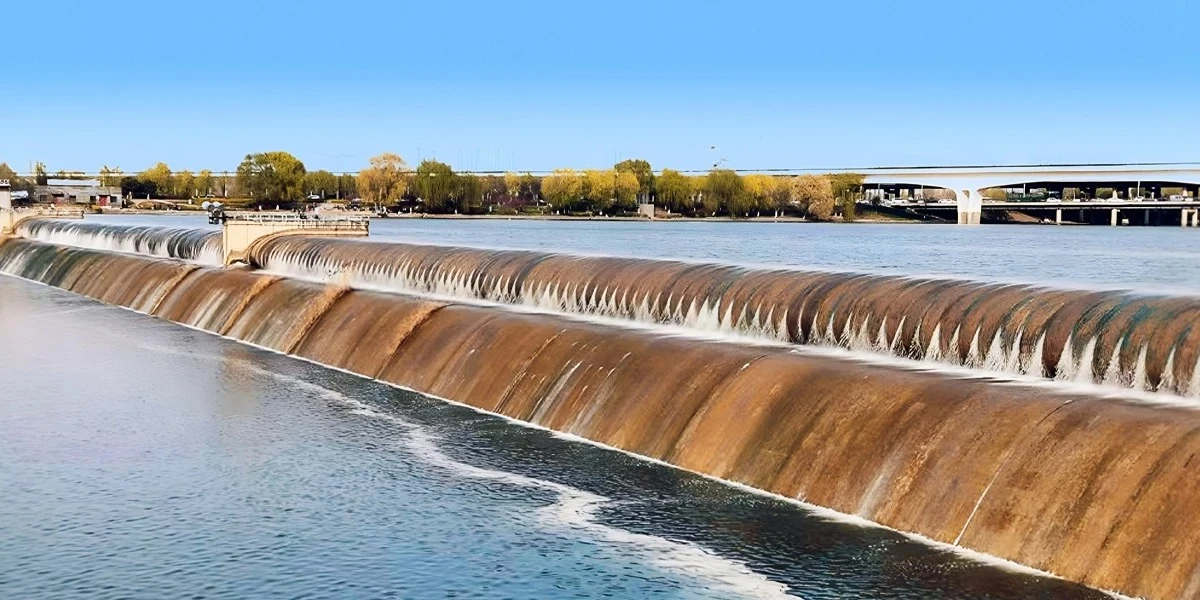

Water is life. We all know that. Yet, managing water in a river is a huge job. We need to save it when we can, and let it pass safely when there is too much. For years, people used big, heavy gates made of concrete and steel. These gates work, but they are costly and hard to move. Today, smart thinkers use a better, simpler idea: the rubber dam.
At Yooil Envirotech, we see the power of this simple idea every day. We are a leading rubber dam company in India. We know that managing river flow does not need to be complex. It can be clean, fast, and kind to the environment. This blog will walk you through this smart solution. It will show you how these dams work and why they are changing the way we look at water.
Let us start with the basics. What is rubber dam in river? Think of a giant, strong balloon built across a river bed. That is the simplest way to picture it. A rubber dam is not a huge wall like the old concrete structures. It is a tough fabric tube or bladder that is fixed to a concrete base on the river bottom.
When this tube is empty, it lies flat. It lets the water flow over it without a problem. When we want to stop or slow the water, we fill the tube with air or water. As it fills up, the tube stands tall. It creates a temporary dam. This action holds back the river water and raises the water level behind it. It is simple, but it is a powerful tool for water storage and control.
The material is special. It is a heavy-duty fabric, often nylon or polyester, covered with a strong, weather-resistant synthetic rubber. This rubber must stand up to years of sun, flood, and changing water conditions. It is tough and flexible at the same time. This simple design is why these dams are a modern marvel of engineering.
The magic of a rubber dam is in its ability to be turned on and off. A fixed concrete dam is always on. A rubber dam can change its mind in minutes. This ability gives us total control over the river’s flow.
The process of control is quite simple. It involves two main states:
To build up a water pool, air or water is pumped into the rubber bladder. The dam stands up like a wall. This is useful for many reasons. It can store water for irrigation during dry months. It can lift the water level so it flows into a canal or a city's water plant. It creates a higher head of water for small power projects. The control system constantly monitors the water level. A smart control system will add or release air to keep the water at the exact height needed.
This is the most important feature. When heavy rain hits and a flood is coming, the dam can be emptied very fast. Air is simply released from the bladder. The dam flops down flat onto the river bed. This action clears the way. It lets the flood water, ice, or heavy silt pass right over it with no harm. This protects the dam itself and stops the river from getting blocked. It also protects people and property downstream from a sudden rise in water level. This quick reaction is a major safety benefit that old-style gates cannot match.
While the core idea is the same, there are two main rubber dam types based on what is inside them:
These dams are filled with compressed air. They are often preferred because they are the quickest to inflate and deflate. Air is always available, and air pumps are easy to keep running. Air systems also do not freeze, which is a good point for very cold places. Yooil Envirotech focuses heavily on these air-filled systems for their quick, reliable action.
These dams use river water itself to inflate the bladder. This type is cheaper to run because there is no need for a big air compressor. However, they take more time to fill and empty. They also need clean water for filling, and pipes can sometimes get clogged with silt.
Both types provide an easy, smooth way to control the flow. They are different from traditional steel gates. Steel gates move slowly and need strong, complex lifting machines. A rubber dam just needs a pump and a control house. This makes them simple to manage and very reliable.
India is a land that depends on the monsoon. We have months of too much water and months of not enough. This makes smart water storage a national need. That is where the rubber dam in India becomes a critical tool.
They help farmers by storing river flow after the monsoon ends. This water can be released slowly over time for irrigation. This simple act of ponding water stops crops from failing. They also help cities get the drinking water they need by keeping the river level high enough to enter the treatment plants. Our country needs solutions that are low-cost, quick to install, and durable. Rubber dams tick all these boxes.
We are proud to be a dedicated rubber dam company in India. Yooil Envirotech has been at the forefront of bringing this global technology to our local waterways. We have played a part in important projects. For example, our work on the Gorakhpur Rubber Dam and the Sihora Rubber Dam shows our firm promise to better water management in India. With years of experience and dozens of projects, we provide strong, custom solutions that fit the unique needs of every river.
These dams require much less money to build than a steel gate dam. They also last a long time and need very little maintenance. When a flood comes, they can go flat and disappear, meaning less risk of damage or failure. This high level of safety and low running cost is why state governments and water departments across India are choosing this technology more and more.
The days of needing massive, slow-moving structures to manage a river are passing. The future is simple, smart, and flexible. It lies in the technology of the rubber dam. This invention is a key part of modern water control. It helps us save water, prevent floods, and power our homes without harming the river's natural course.
As a leading rubber dam company in India, Yooil Envirotech is here to provide the most advanced, air-filled rubber dam solutions. We make water management simple, safe, and effective. If we work together to use these smart tools, we can make sure our rivers keep flowing and our water needs are met for many years to come.
